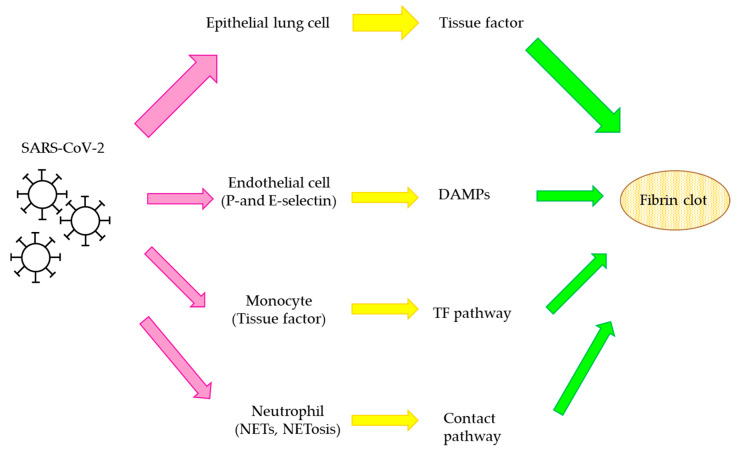Figure 5.
Proposed mechanisms of SARS-CoV-2 associated thrombosis. Several thrombosis mechanisms have been proposed, the important pathogenic effect is the binding and destruction of epithelial lung cells. The phenomenon relates to tissue factor release into blood circulation and activate coagulation pathways at lung sites and extend it throughout the circulatory systems. In addition, infected cells become the trigger to release proinflammatory cytokines and chemokines. The activated endothelial cells upregulate P-selectin and E-selectin leading to recruitment of platelets and leukocytes and complement activation. The infection and recruitment are related to the release of danger-associated molecular patterns (DAMPs). Monocytes activated through complement activation, express tissue factor, and activate coagulation cascades. Neutrophils release NETs which activate the contact pathway directly. Thrombin is generated through these pathways, fibrinogen is converted to fibrin, and the activation of coagulation cascade is related to SARS-CoV-2 associated thrombosis. The reaction of (i) affects to cells, (ii) protein expression, and (iii) the mechanisms of fibrin clot generation were shown as red, yellow and green arrows, respectively.

